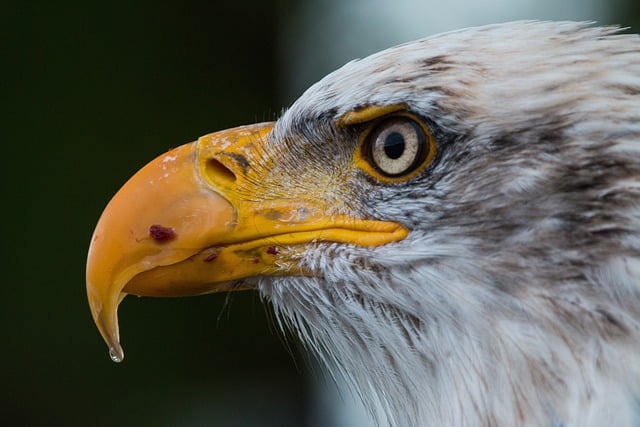Top 10 Birds With Amazing Beaks

Bird beaks, also known as bills, refer to the elongated structures found on the front of a bird’s face, which serve multiple functions, including feeding, defense, preening, and communication. Constructed with a resilient, keratinous covering, beaks exhibit a variety of distinctive adaptations that are specific to each bird species. In this article, we will discuss the top 10 birds with amazing beaks.
List of Top 10 Birds With Amazing Beaks
- Shoebill (Balaniceps rex)
- Toucan (Ramafastidae family)
- Sword-billed Hummingbird (Ensifera Ensifera)
- Kiwi (Apterygidae family)
- Pelican (Pelecanidae family)
- Flamingos (Phoenicopteridae family)
- Hornbills (Family Beaucerotidae)
- Giant Raible (Anarhynchus frontalis)
- Crossbill (Loxia genus)
- Spoonbill (Platalia genus)
Birds With Amazing Beaks
Shoebill (Balaniceps rex)
The shoebill is a large bird with a distinctive bill shaped like a shoe. This massive beak has a sharp hook at the end, which it uses to grab and hold its prey. With a height of over 4 ft (1.2 m), the shoebill has one of the most impressive beak structures among birds. It primarily eats fish, lungfish, and amphibians, using its beak with remarkable precision.

Toucan (Ramafastidae family)
Toucans are famous for their unique and brightly colored beaks, which stand out as one of the most remarkable features of these tropical birds. These beaks are long and often brightly colored, with shades of red, yellow, green, and black. Despite their seemingly robust appearance, toucan beaks are surprisingly lightweight, thanks to the incorporation of hollow structures within them.

Sword-billed Hummingbird (Ensifera Ensifera)
The beak of the sword-billed hummingbird is the longest body size of any bird species. With a beak extending up to 4 inches (10 cm) in length, the toucan possesses a distinctive feature that contrasts with its relatively shorter body, measuring around 4.5 inches (11 cm).

This unique adaptation allows the sword-billed hummingbird to reach nectar from tall tubular flowers that other hummingbirds cannot reach. It hovers in front of flowers and extends its beak inside to extract nectar with its long, thin tongue.
Kiwi (Apterygidae family)
Endemic to New Zealand, the kiwi is a flightless bird distinguished by its compact, robust body and an elongated, slender beak. The unique design of kiwi beaks serves the purpose of probing the forest floor, as these birds primarily forage for invertebrates as their main source of food.

These beaks have a sensitive tip that allows the kiwi to detect movement and locate prey even in low light conditions. In addition to its role in feeding, the toucan’s beak serves versatile functions, including the plucking of feathers and the excavation of burrows.
Pelican (Pelecanidae family)
Pelicans are known for their large, extendable beaks with a distinctive throat pouch. Their beaks are long and curved, allowing them to pluck fish from the water. Pelicans exhibit remarkable fishing prowess by utilizing their beaks as effective tools. They dive into the water and skillfully expand their pouches to trap fish, showcasing the adaptability and efficiency of their unique beak design.

The pouch can hold a significant amount of prey, allowing pelicans to consume large amounts of fish in a single meal.
Flamingos (Phoenicopteridae family)
Flamingos boast a distinctive beak specially adapted for filter feeding. Characterized by its long, slender, and downward-curved shape, the beak houses a unique structure known as lamellae, which aids in their feeding process. These lamellae act like tiny filters, allowing the flamingo to separate small organisms, algae, and plankton from the water.

The distinctive shape of the flamingo’s beak serves a dual purpose. Not only does it contribute to the bird’s elegant appearance, but it also plays a functional role by creating a vacuum effect.
Hornbills (Family Beaucerotidae)
Hornbills are known for their distinctively curved beaks, frequently embellished with casques—hollow structures positioned on the upper beak. The casque’s dimensions and form vary among species, believed to serve multiple functions such as amplifying vocalizations, attracting mates, and defending territories.

Giant Raible (Anarhynchus frontalis)
The Giant Ribble is a unique bird found in New Zealand. What sets it apart is its beak, which is curved to the right. This special beak adaptation allows the giant Ribbill to feed on insects and larvae hidden under stones and rocks in riverbeds.

Crossbill (Loxia genus)
Crossbills derive their name from their distinctive crossed mandibles, a feature that endows them with a unique specialization in extracting seeds from conifer cones. Their unique beak structure enables them to crack open the scales of the cones and scoop out the seeds inside.

Crossbills can adjust the position of their mandibles, allowing them to extract seeds from cones of various sizes. This adaptability helps them access food sources that other birds cannot effectively use.
Spoonbill (Platalia genus)
Spoonbills have their unique flat, spoon-shaped bills. Spoonbills use this specialized beak to precisely capture small fish, crustaceans, insects, and other aquatic organisms.

Spoonbills move their beak rapidly from side to side, using the sensitive bill tip to locate prey. This feeding behavior gives them their distinctive name and distinguishes them as exceptional filter feeders.




